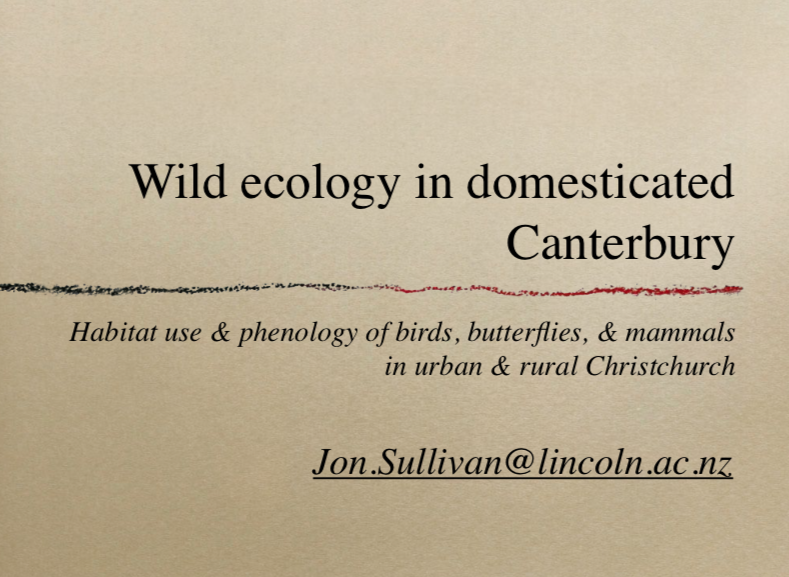RECENT ARTICLES
- CEBRA: An optimised and standardised sampling protocol for BioBlitz
- Stop it people, the plural of anecdote IS data!
- That's no pollinator, that's a flower visitor
- Add a scale to your macro photos
- What to photograph when counting the wild
- Imagine counting the wild on EVERY street in a city!
- My wild counting workflow
- A butterfly flew through
- Why iNaturalist observations without photos can be research grade
- Why you shouldn’t use a spreadsheet for data entry
- All articles ...
Wild ecology in domesticated Canterbury, New Zealand
A summary of my main finds to date from my first seven years of wild counts in and around Christchurch city.
written Nov 17, 2013 • by Jon Sullivan • Category: Wild Changes

I’ll be spending most of this coming week working on the analysis of my 10.5 years of road kill (car kill) data between Christchurch and Lincoln. I’ll be talking about the results at next week’s joint conference of the New Zealand and Australian Ecological Societies (EcoTas13). I’ll be specifically looking at how rates of bird mortality due to cars in peri-urban Christchurch compare with others’ measurements of the rates of mortality from pest mammals in comparable habitats. My initial calculations suggest that they are similar. I’ll post more about that later after I’ve refined my analysis.
In the meantime, I just had a look at a more general talk I gave on my local nature watching at the 2010 annual conference of the NZ Ecological Society in Dunedin. It still gives a useful summary of the routes I’ve been recording along between Christchurch and Lincoln and the kinds of patterns I’ve been finding in birds, butterflies, and road kill.
If you’re interested, you can have a look at my conference slides, complete with my (unedited) talk notes.

Here’s the abstract for the talk.
Wild ecology in domesticated Canterbury: habitat use and phenology of birds, butterflies, and mammals in urban and rural Christchurch
To bring more native nature into our urban and rural areas, we need to better understand wild ecology in these habitats. With this in mind, I’ve added over 70,000 bird, butterfly, and mammal (road kill) observations to the New Zealand Biodiversity Recording Network, made along repeated routes in and between southwestern Christchurch and Lincoln. Most have been made since 2003 while biking to work, a 17 km route through a mix of housing and pastures. These data reveal a strong seasonal ebb and flow of species and show the numerical dominance of naturalised species. Cars are a substantial source of mortality, killing more individuals of many bird species in a year than I see on any ride. Suburban areas in southwestern Christchurch, away from the Port Hills and restoration areas, have as few native forest birds as farmland. With surprisingly few exceptions, fantails and grey warblers are only where there is dense, tall, evergreen vegetation. Bellbirds are where there are trees with bird-flowers (especially eucalypts) and are largely absent when these trees are not flowering. This suggests that even our most adaptable native forest birds are strongly habitat-limited in these landscapes, highlighting the importance of retaining and growing areas of tall evergreen trees. Long-term quantitative data like these are essential for assessing the long-term effects of land development, invasions, and climate change on local biodiversity. I encourage everyone to pick a few taxa and standard routes and start recording.
